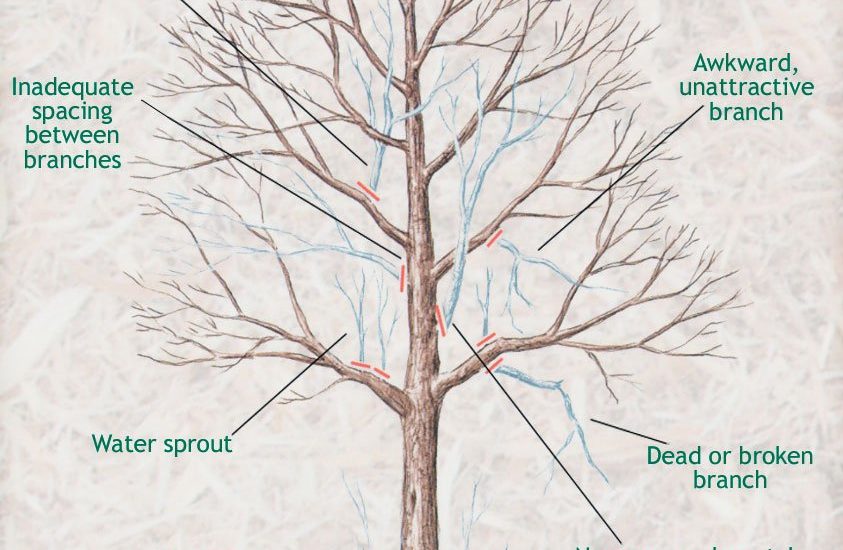When to prune maple tree? The timing of pruning can significantly impact the health and aesthetics of your maple tree. Understanding the ideal time to prune is crucial for promoting growth and maintaining its shape. Pruning during the dormant season, typically in late winter or early spring, is recommended for most maple tree species. By following the right timing, you can help your maple tree thrive and flourish throughout the year. Let’s delve deeper into the best practices for pruning your maple tree at the perfect time.
When to Prune Maple Tree: A Complete Guide for Healthy Growth
Welcome, nature lovers! If you have a beautiful maple tree gracing your yard, you already know what a magnificent sight it can be. But like any living thing, your maple tree needs some TLC to thrive. One essential aspect of caring for your maple tree is knowing when to prune it. Pruning at the right time can promote healthy growth, maintain shape, and enhance the overall beauty of your tree. Let’s dive into the world of maple tree pruning together!
Understanding the Maple Tree
Before we delve into the intricacies of pruning, let’s take a moment to appreciate the remarkable maple tree. Maples are deciduous trees known for their stunning foliage that turns vibrant shades of red, orange, and yellow in the fall. With their unique leaf shapes and branching patterns, maples are a favorite among gardeners and arborists alike.
Why Pruning is Important
Pruning is a crucial part of maple tree care for several reasons. First and foremost, pruning helps to maintain the tree’s health by removing dead, diseased, or damaged branches. This allows the tree to allocate resources more efficiently to healthy growth. Additionally, pruning can shape the tree, improve air circulation within the canopy, and prevent branches from becoming too heavy and potentially causing damage.
Best Time to Prune Maple Tree
Timing is key when it comes to pruning your maple tree. The ideal time to prune a maple tree is during its dormant season, which typically occurs in late winter to early spring. Pruning during this period allows the tree to heal quickly and minimize stress since the sap is not actively flowing.
Early Spring Pruning
Early spring, just before new growth emerges, is an excellent time to prune your maple tree. This timing allows you to shape the tree before the growing season begins. Be sure to avoid pruning too late in spring, as it can lead to excessive sap bleeding and potentially weaken the tree.
Summer Pruning
While the dormant season is the best time for major pruning, light pruning can be done during the summer months if necessary. Summer pruning is ideal for removing small branches or correcting minor growth issues. However, keep in mind that pruning during the summer can be stressful for the tree, so it should be kept to a minimum.
Pruning in Fall
It’s generally best to avoid pruning maple trees in the fall, especially as the tree prepares for dormancy. Pruning in the fall can leave fresh wounds exposed to harsh winter conditions, making the tree more vulnerable to disease and pests. Save major pruning tasks for the dormant season to ensure the health and longevity of your maple tree.
How to Prune Maple Tree
Now that you know when to prune your maple tree, let’s talk about the right way to do it. Proper pruning techniques are essential to prevent damage and promote healthy growth.
Tools You’ll Need
Before you start pruning, make sure you have the right tools for the job. Sharp and clean pruning shears, loppers for thicker branches, and a pruning saw for larger limbs are essential. Remember to disinfect your tools between cuts to prevent the spread of diseases.
Pruning Tips
When pruning your maple tree, start by removing dead, diseased, or crossing branches. Make clean cuts just outside the branch collar without leaving stubs. Avoid cutting too close to the trunk or damaging the branch bark. Step back occasionally to assess the tree’s overall shape and make adjustments as needed to maintain balance.
Consulting a Professional
If you are unsure about pruning or dealing with large branches, don’t hesitate to seek help from a certified arborist. A professional can provide expert advice and ensure that your maple tree is pruned correctly to prevent any long-term damage.
Pruning your maple tree at the right time is essential for its health and beauty. By understanding when to prune and following proper techniques, you can help your tree flourish and thrive for years to come. Remember, a well-pruned maple tree is not only a joy to behold but also a vital part of your landscape ecosystem. So, grab your pruning shears and give your maple tree the care it deserves!
Pruning a Maple Tree
Frequently Asked Questions
How often should I prune my maple tree?
Maple trees generally benefit from pruning every 3-5 years, but the frequency can vary depending on the specific type of maple tree and its growth rate. It’s important to assess your tree’s branching structure regularly to determine if pruning is necessary.
Can I prune my maple tree in any season?
The best time to prune a maple tree is during late winter to early spring while the tree is still dormant. Avoid pruning in the fall as it may stimulate new growth that won’t have enough time to harden before winter, potentially causing damage.
What tools do I need to prune a maple tree effectively?
To prune a maple tree, you will need a sharp pair of pruning shears or loppers for smaller branches, and a pruning saw for larger branches. It’s crucial to use sharp and clean tools to make precise cuts and minimize the risk of damaging the tree.
Final Thoughts
Prune maple trees during late winter or early spring to promote healthy growth and shape. Avoid pruning in late summer or fall to prevent sap bleeding. Regularly check for dead or diseased branches and remove them promptly. When to prune maple tree depends on the desired outcome and the tree’s specific needs. Remember, proper timing and technique are crucial for the overall health and beauty of your maple tree.






